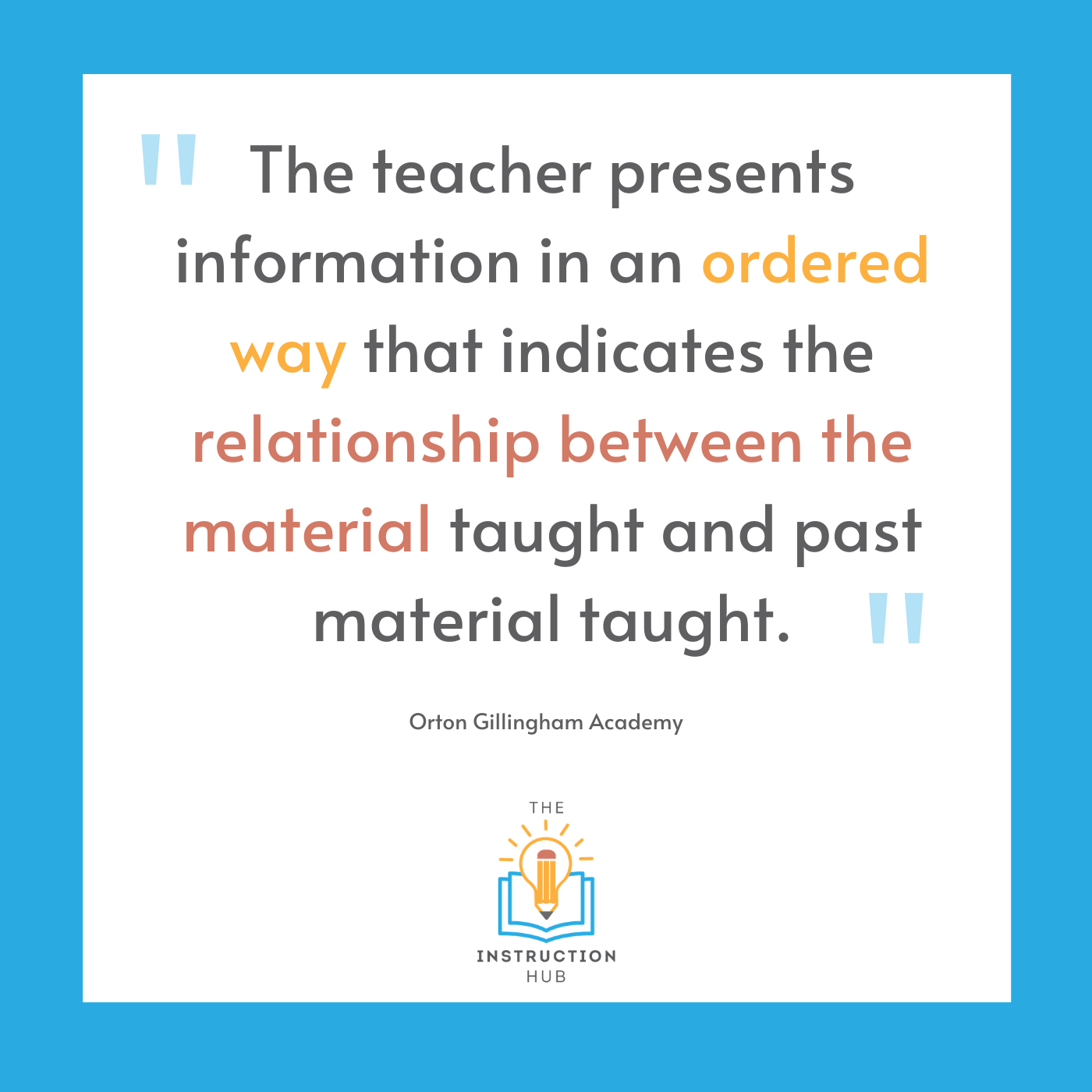Why is a Systematic Lesson so Important?
How do you learn best? Have you ever considered elements of instruction or delivery of instruction that support you in both learning and retaining information? If you learn something in bits and pieces with minimal review, what are the chances that you will be able to readily recall that information for application?
Orton-Gillingham is often thought to be very structured. Although O-G is systematic, it still has variety, excitement, and dare I say FUN. The Gillingham Manual even states that this type of instruction, “should not be perceived as the grunt and groan method. Lessons can be fun, alive, and activity-based while helping children and adults learn the structure of language for reading and writing.”
The Orton-Gillingham Approach is intentional in the order in which it presents the structure of language and in the actual delivery of instruction. It moves the presentation of material from easier to more challenging. Skills are intentionally built on one another.
You may find slightly different versions of the lesson plan. However, what you will find in a true O-G lesson plan is the systematic approach of moving material from simple to complex. You will also see the cumulative element where the material is reviewed and reinforced multiple times and in multiple ways (tracing, spelling dictation, reading, etc.) There are relationships and connections between what has been learned and what is being presented throughout the lesson. Systematic and cumulative are a two of the Orton Principles. You can read more about those HERE.
In the Orton lesson, a fair amount of time is spent on review and reinforcement. The lesson will review recently taught concepts. The practitioner will also use diagnostic notes to prescriptively select content where the student has made an error or demonstrated a need for support. With this mindset, the student is given multiple opportunities to review material using AVK (auditory-visual-kinesthetic/tactile) strategies to help them commit the material to long-term use. Looking at this order you can see how moving sequentially, for example working at single sounds before moving into single words that contain the same sounds, primes the pump for the student, and sets them up for greater success.
The lesson plan that I use begins with connecting the sounds to the symbols. It will then move into working at the word level for reading and spelling, which is followed by the sentence level for reading and spelling. New information comes after a significant portion of review and reinforcement. A new concept is not expected to be mastered in the first presentation and may need additional introductions. We also know mastery will be pursued by having the new concept included in the review in future lessons. Each of these skills is combined into an oral reading portion. Recap shouldn’t be forgotten, since it is a way to reinforce new learning and prepare the student to recall it in future lessons.
When you look at the progression that an Orton-Gillingham practitioner follows, you will also see the same principle of moving from simple to complex applied. You will have sounds and symbols, syllables, combining and dividing of syllables, morphemes, and so on. This allows the student to learn in an ordered way and to make connections between these components. This progression allows the O-G practitioner to select concepts for lessons that have been taught and connect them with new learning. Using a cumulative approach, students have a hook to link new learning.
I will also say that for many students who are working so hard to organize learning and keep up with lessons in school, the predictability of the lesson structure is comforting.
They know what is expected, what to do, and what comes next. This often eases anxiety, confusion, and frees the student to focus on learning.
I like to provide a visual for my lessons. In the image, you will see my lesson schedule. I feel this provides the students with a map of where we are headed and the structure of the lesson. It also gives them an opportunity to see brain breaks coming and if they happen to daydream for a minute or so they can quickly find their place again. My students can flip over the cards to see their progression through the lessons.
You will notice that I use lightning bolts in this teaching tool. I do this because our brains are making connections at lightning speed. When they have completed a portion of the lesson, they turn over a bolt to show completion. I also clearly indicate when our brain breaks so that they know when they will have a chance to have a bit of a rest and regroup.
It appears that the brain breaks are back to back. However, what you will notice is that the warm-up, visual and auditory practice, and phonological awareness or blending drill go together nicely. A break right after this portion is a natural time for a pause. The review and reinforcement portion of the lesson is the meat of the lesson and often requires a lot of attention and energy on behalf of the student. A break right after that and before new information also seems to be a nice place for a break.
I hope this provides a brief illustration as to why systematic design is so important. As Paula Rome and Jean Osman state in The Language Toolkit, “regardless of the length of the lesson, the structure of the lesson plan remains the same.” There is a good reason for that!
Here are some Resources for Lesson Planning (some links are affiliate links):
Free Resources for Lesson Planning:
This information is the intellectual property of ©2022 The Instruction Hub. Do not use or repurpose without expressed permission from The Instruction Hub. Please give The Instruction Hub an attribution if you choose to use, reference, or quote/paraphrase copyrighted materials. This includes but is not limited to blogs, social media, and resources.


